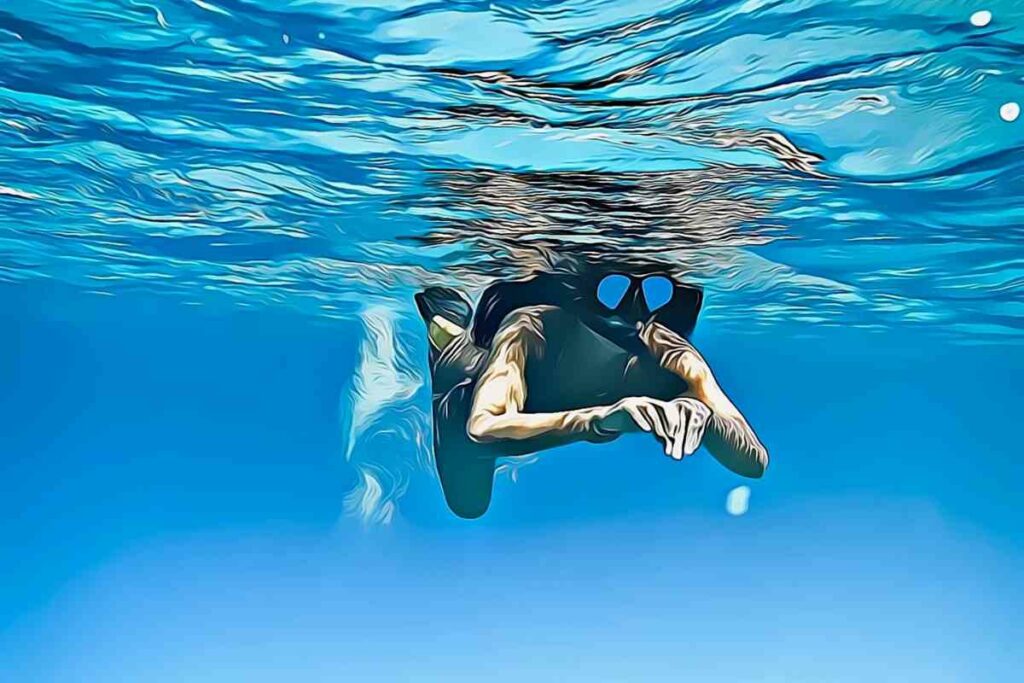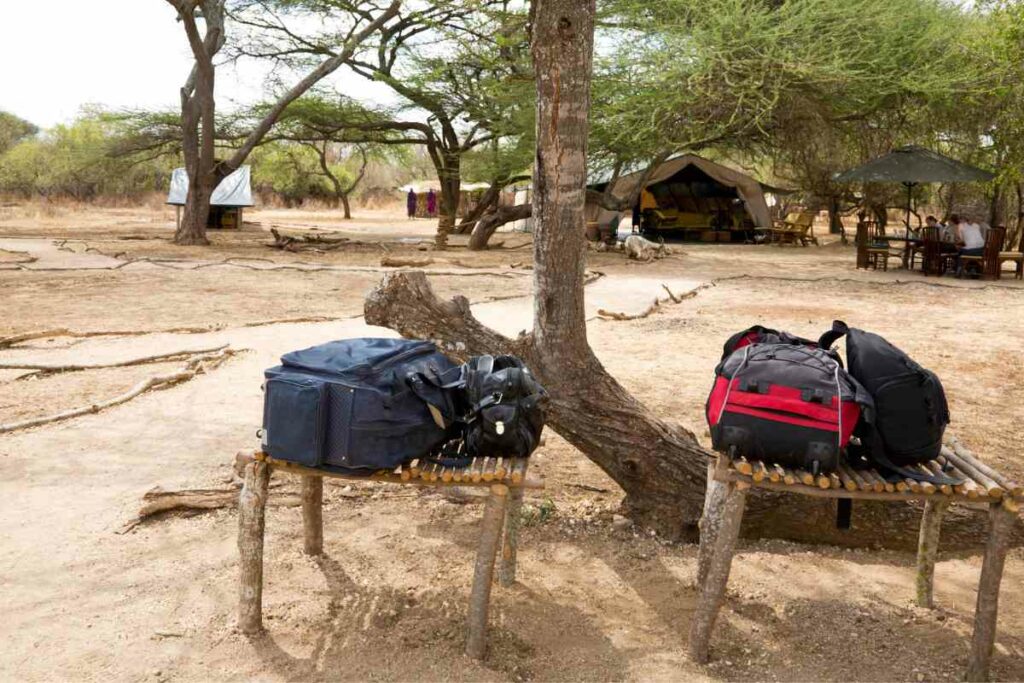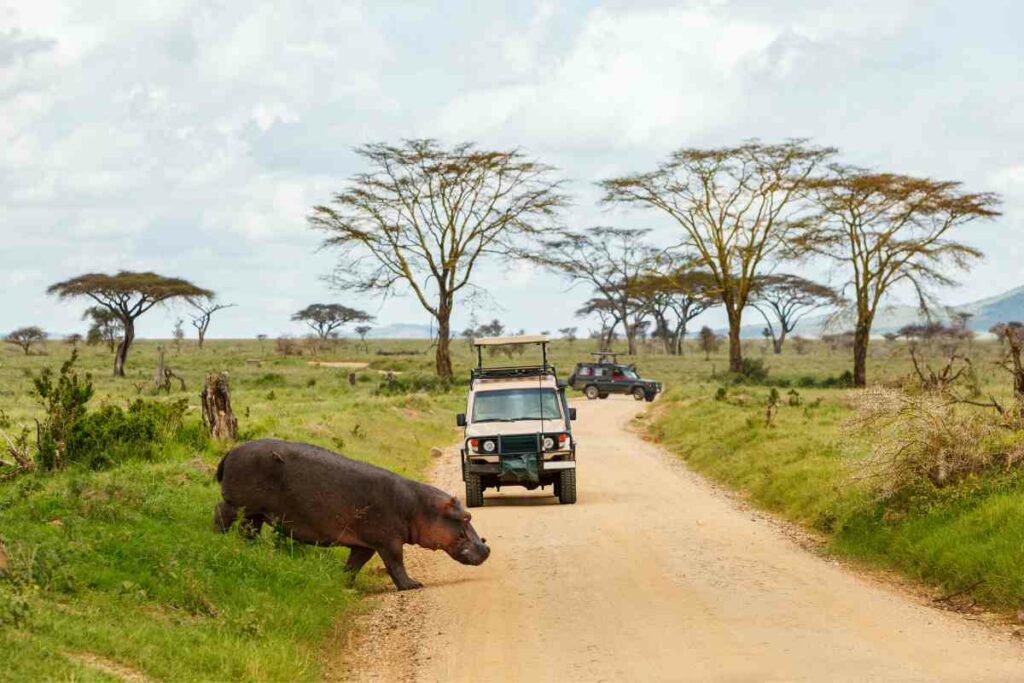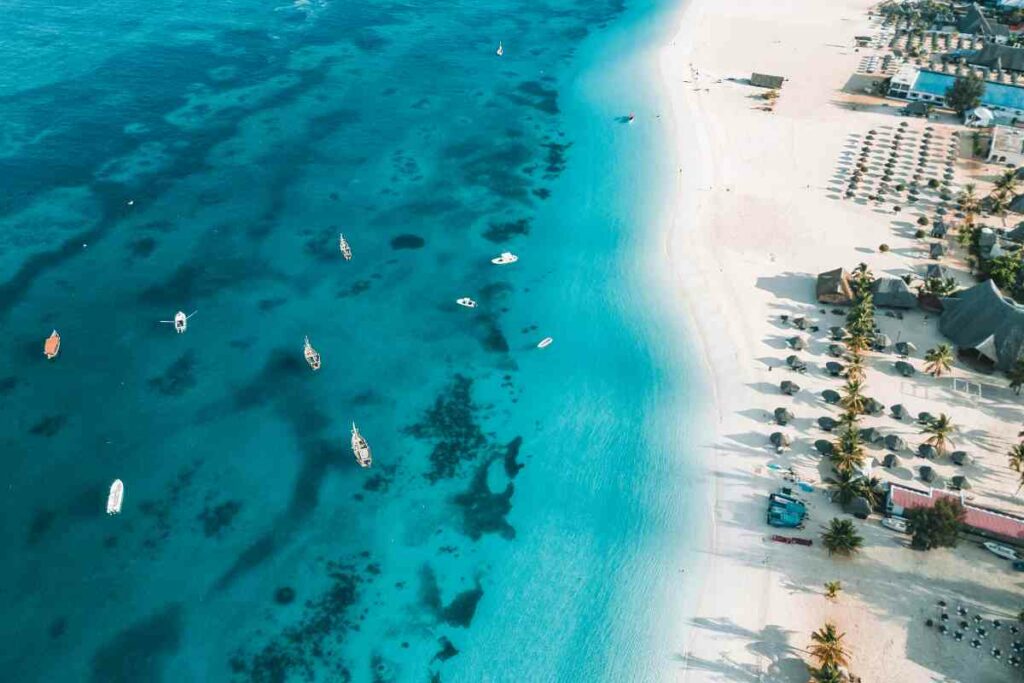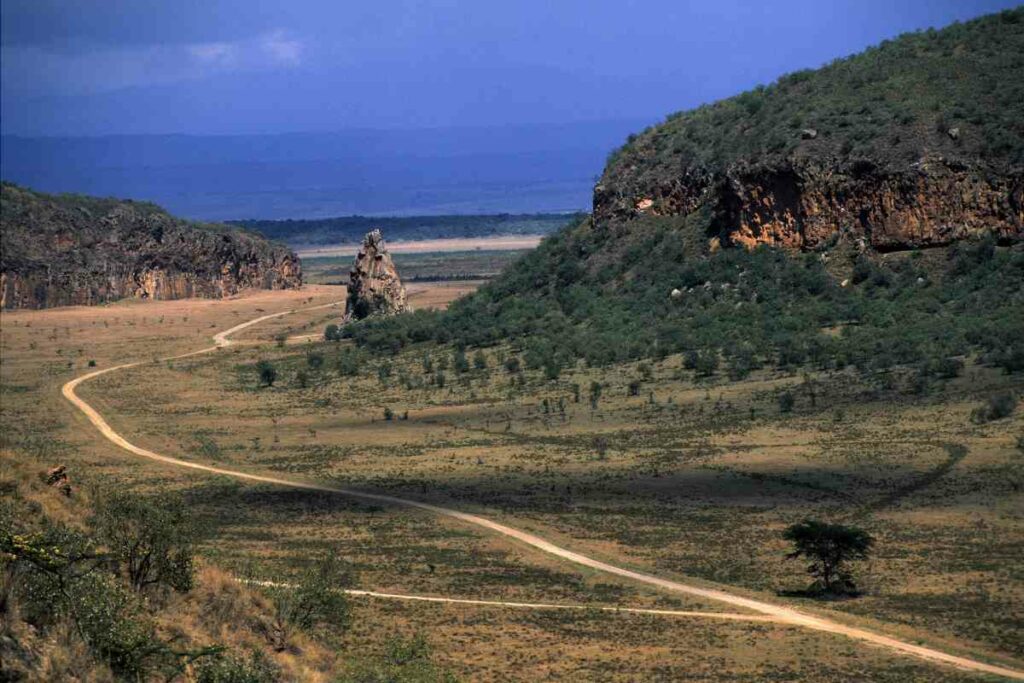Kruger National Park is the oldest and largest national park in South Africa.
Situated in the northeastern part of South Africa, it welcomes approximately 900,000 tourists annually.
But what makes this park a fascinating destination?
Here are 5 reasons why to visit the Kruger National Park.
Top Attractions In Kruger National Park
1. The Big 5
The Big 5 are the most sought-after animals during an African safari.
They are lions, leopards, elephants, rhinos, and Cape buffaloes.
Let us briefly look at each.
African Lions
A mature African lion grows up to 1.2 meters long and can weigh in excess of 200kgs.
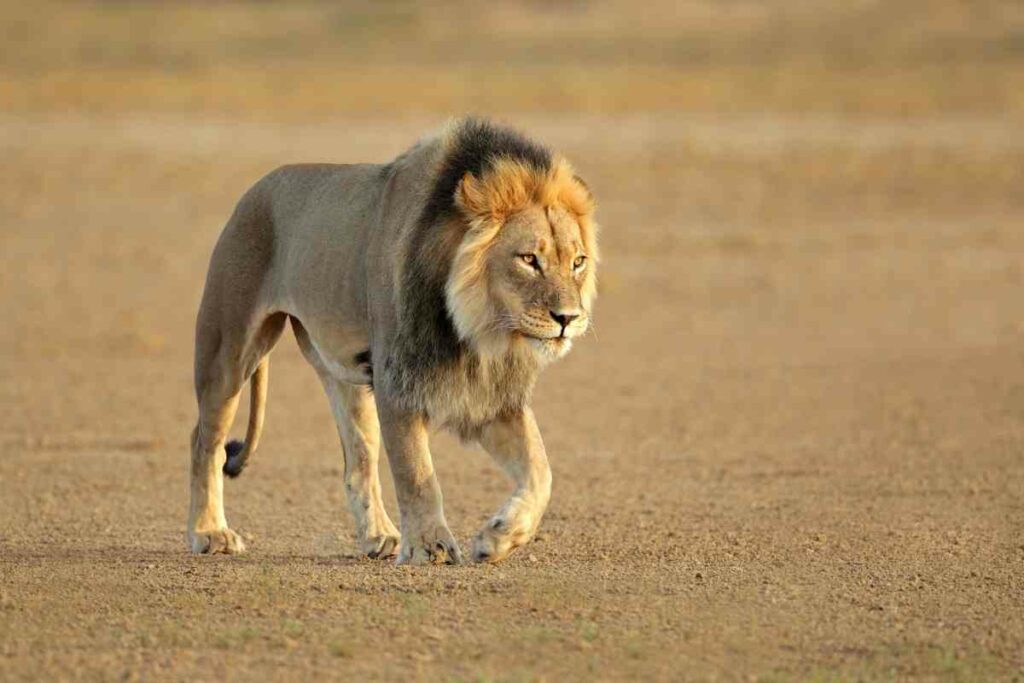
Their 114-decibel roars usually send spasms of fear among prey in the Kruger, and it’s quite a sight to behold.
The largest lion prides are found in the central Kruger region, which has many zebras, their favorite prey.
Buffalos, wildebeests, gemsboks, and impalas are also common on the menu.
Did You Know? Lionesses do most of the hunting to feed the pride while the male lions slumber or patrol their territories.
Elephants
Elephants are intelligent, gentle giants.
They can weigh as much as 10.1 tons and usually give birth to 100kg calves.
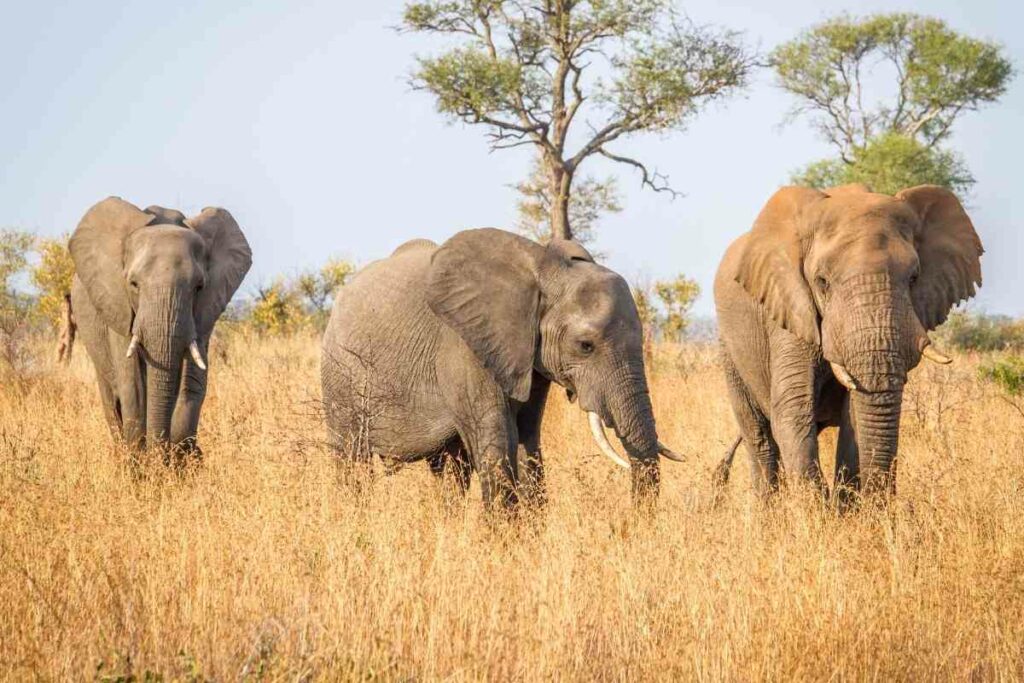
Due to their sensitive skins without sweat glands, elephants relish mud baths and swimming to cool down.
Besides, they also flap their large ears if there is no water source in sight.
Elephants live in strong family units led by a dominant older female to care for younger offspring.
Bulls go solitary or form small bachelor groups after being kicked out of the family when they attain maturity.
Elephant sightings are widespread around the park due to the extensive conservation efforts.
Black Rhinos
Black rhinos are an endangered species and are heavily protected.
While most reside in sanctuaries, your best bet to see them in the wild is in Satara through to Skukuza in the southern region.
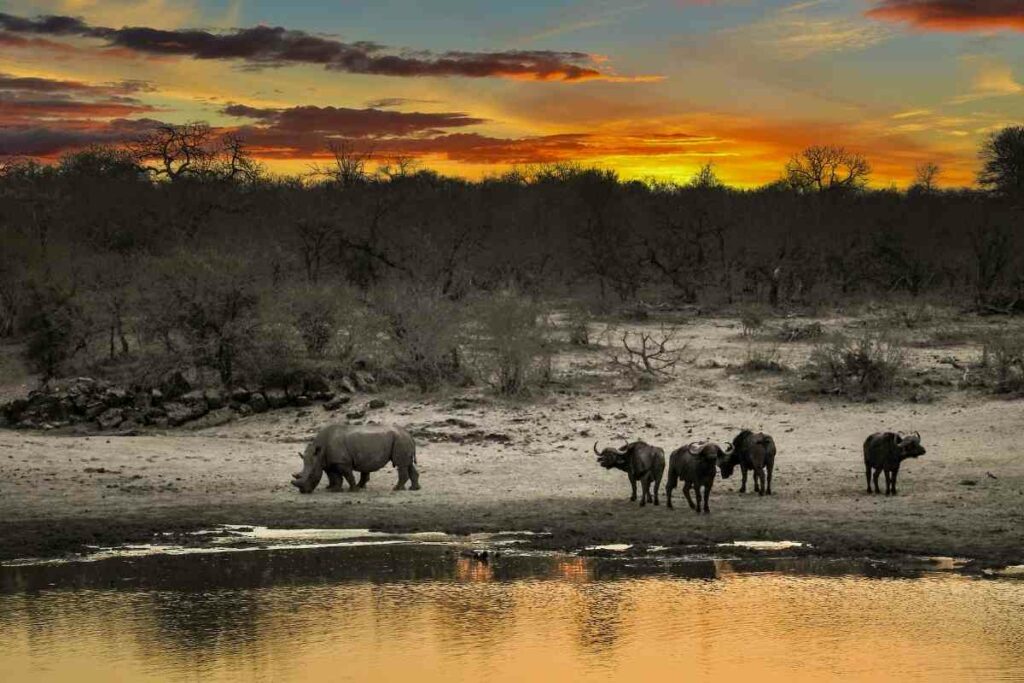
The region has dense vegetation, and it would be best to use guides to maneuver.
Rhinos are also nocturnal and spend most days in the shade or mud wallows.
They take very deep slumbers sometimes while standing, and you can approach them if you are brave enough.
Buffalos
Buffalos are significantly the most aggressive of the Big 5 when injured or cornered.

Weighing up to 750kgs, they ruthlessly defend one of their own using their curved horns from predators, especially lions who are courageous enough to prey on mature buffaloes.
They have a distinctive stare that can send chills down your spine.
Due to their unpredictable nature, you best stay away from them as they kill more people than all the Big 5 combined.
Leopards
Leopards are the 2nd largest of the big cats but are very timid.
They hunt primarily by ambush, and you will normally find them in woodlands, rocky or thick bushy terrains.
Most sightings of the Kruger are in the southeastern region between Skukuza and Lower Sabie.
Leopards are skilled climbers and they prefer staying on trees for camouflage, relaxing, and protecting their kills from hyenas and lions.
Nocturnal In Nature – They prefer to hunt at night, but you might be lucky to stumble upon a rare daytime chase.
2. White Lions
Spotting white lions is arguably the most unique highlight of going on safari at the Kruger.
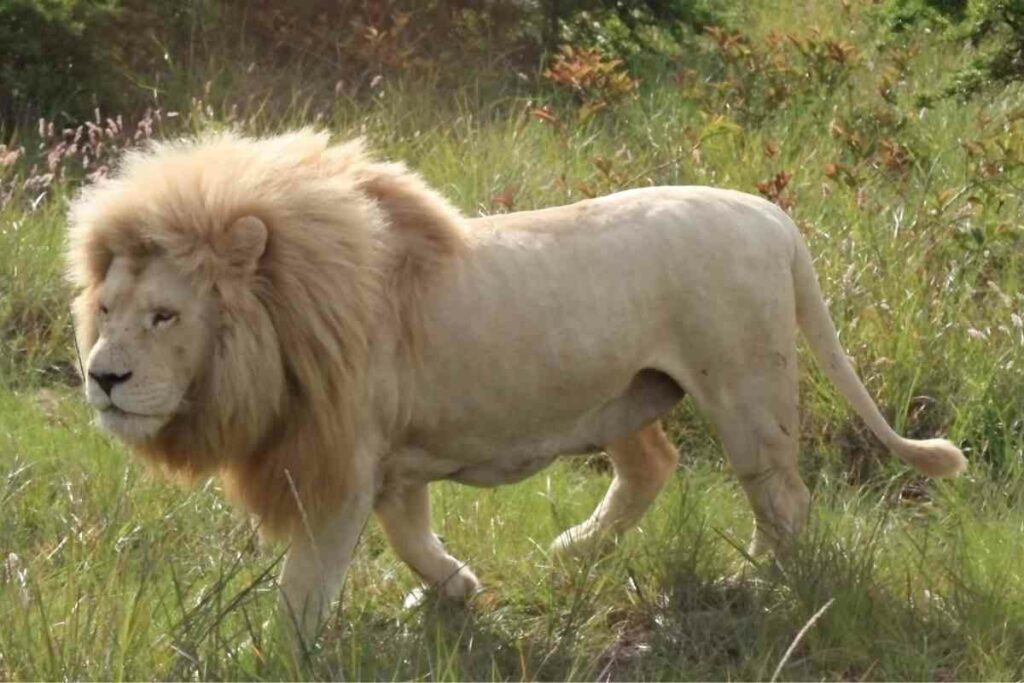
The lions are endemic to the Timbavati region in Mpumalanga Province, west of Kruger National Park.
‘Timbavati’ in Tsonga means “the place where something sacred came down to earth from the heavens,” in reference to the special and rare pigmentation of these lions.
The pigmentation is caused by a recessive gene mutation that makes their fur white rather than tawny brown.
To successfully breed a white cub, both the mating lions must have the rare gene.
Trophy hunting has severely decimated the white lion population, and it is listed as vulnerable by the IUCN.
Keep In Mind – Most white lions live in captivity across the globe, with ONLY THREE currently found in the wild. 2 of the 3 are in the Kruger National Park, with the Ngala Private Game Reserve being your best chance of spotting one.
They are highly sought after by safari goers for an opportunity to catch a glimpse and photograph this unusual but impressive natural phenomenon.
Despite several white cubs being born over the years, most die in violent pride takeovers.
Since repopulation efforts have been fairly unsuccessful, we can only hope these two cubs make it to adulthood to help increase their numbers.
3. Birds Watching
The Kruger ecosystem is home to some of the rarest and most spectacular bird species on the planet.
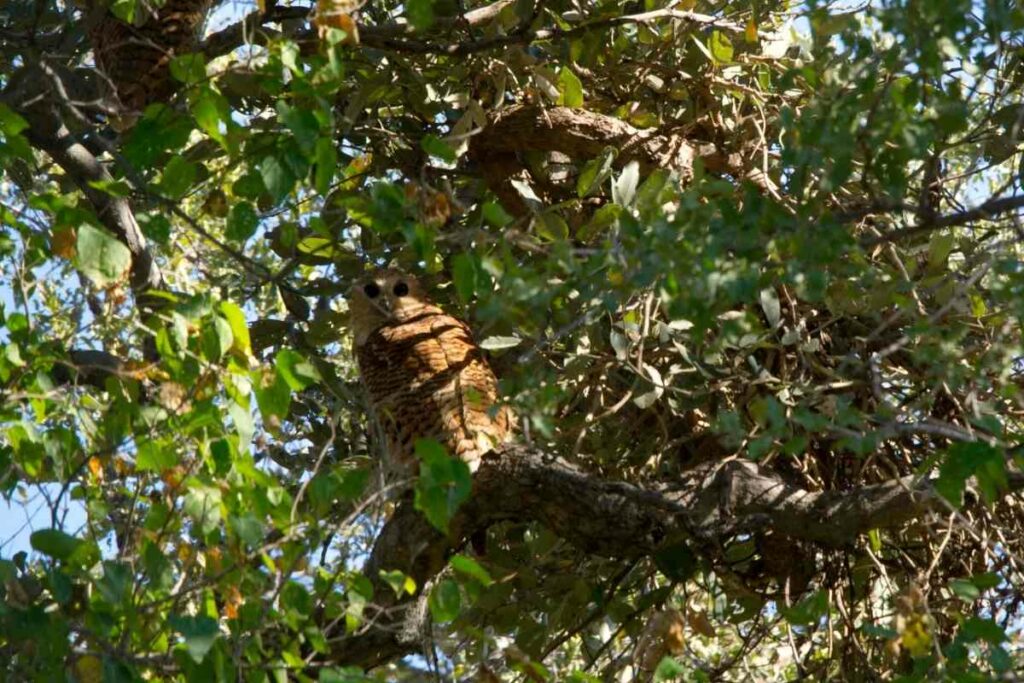
With over 550 bird species recorded, it is ranked as one of Africa’s best birdwatching destinations to top up its beautiful terrains and variety of wildlife.
The park’s northern region surrounding the Luvuvhu River and Olifants River offers the most incredible birdwatching experiences.
The ‘Big Six’ are Kruger’s most sought-after bird species.
These are:
- the Kori bustard
- lappet-faced vulture
- Pel’s fishing owl
- martial eagle
- saddle-billed stork
- and southern ground hornbill
Easy to spot except for the owl; these are the biggest birds of their respective species.
Besides the Big Six, you can spot many other endemic bird species in the park.
Francolins are common, as well as Lilac-breasted rollers, Burchell’s Coucals, and the Cape glossy starlings.
Kruger also has a massive population of eagle species, such as the:
- Verreaux
- Tawny
- Ayres
- Kroonarend
- and the long-crested eagles
The onset of the rainy season in November brings with it migratory birds from across the globe.
For the next four months until early April, Kruger has a high concentration of birds swirling in the skies, and it’s the best time to visit the park.
Some notable migratory birds include the Wahlberg’s eagle, Klaas’s cuckoo, wood sandpipers, and the yellow-billed kite.
4. African Wild Dogs
Kruger hosts one of the largest remaining populace of endangered African wild dogs.
Despite a gestation period of two and a half months, their number has been steadily declining over the years.
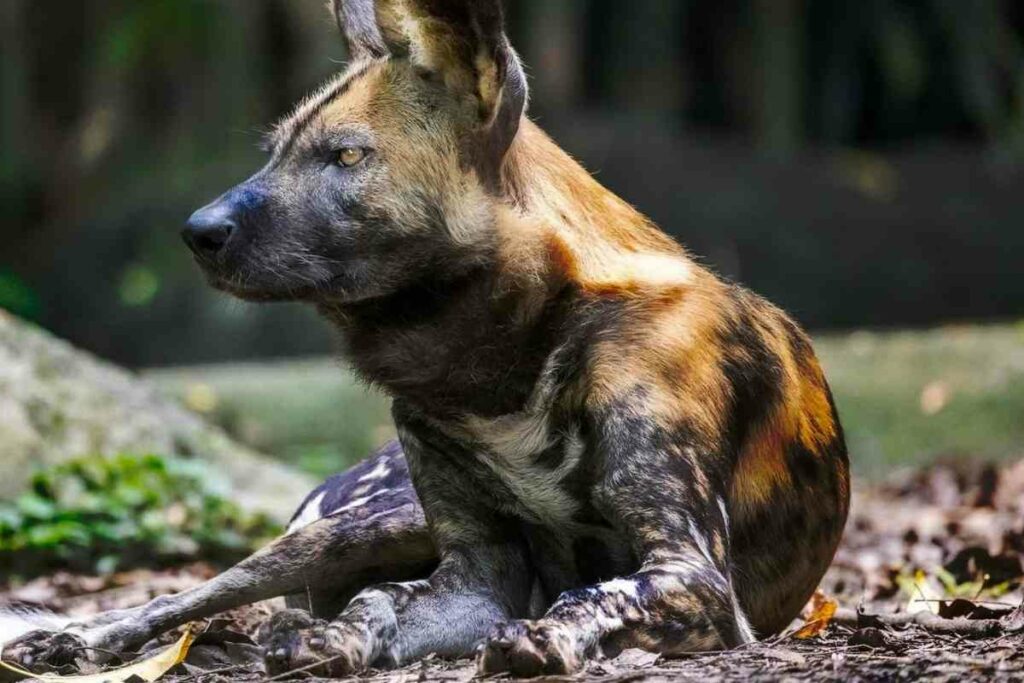
Currently, only about 400 wild dogs reside in Kruger due to urbanization which has forced them out of their natural habitat.
Human poisoning and ravaging canine diseases, especially rabies, have further increased their decline.
While they may not be sought after like the big cats, watching them hunt is such an absolute spectacle.
Hunting in well-coordinated packs, wild dogs have the highest success rate among the predators in the wild. 4 in 5 hunts are successful, making them very efficient killers.
In Contrast – Only cheetahs come close with a 60% success rate, with leopards at 40% and lions further back at 25-30%.
Unfortunately, even in these large packs, they lose up to half of their prey to lions and the marauding spotted hyenas.
The common sightings are around the Skukuza Rest Camp, south of the park.
The dogs exclusively feed on fresh meat, taking down larger prey like wildebeests, which are 10 times their weight.
They also have a sweet tooth for impalas, sable antelope, and the nyala.
5. Best Safari Lodges
Kruger National Park has incredible accommodation facilities.
The lodges are conveniently located near common animal sightings for the most exclusive safari experience.
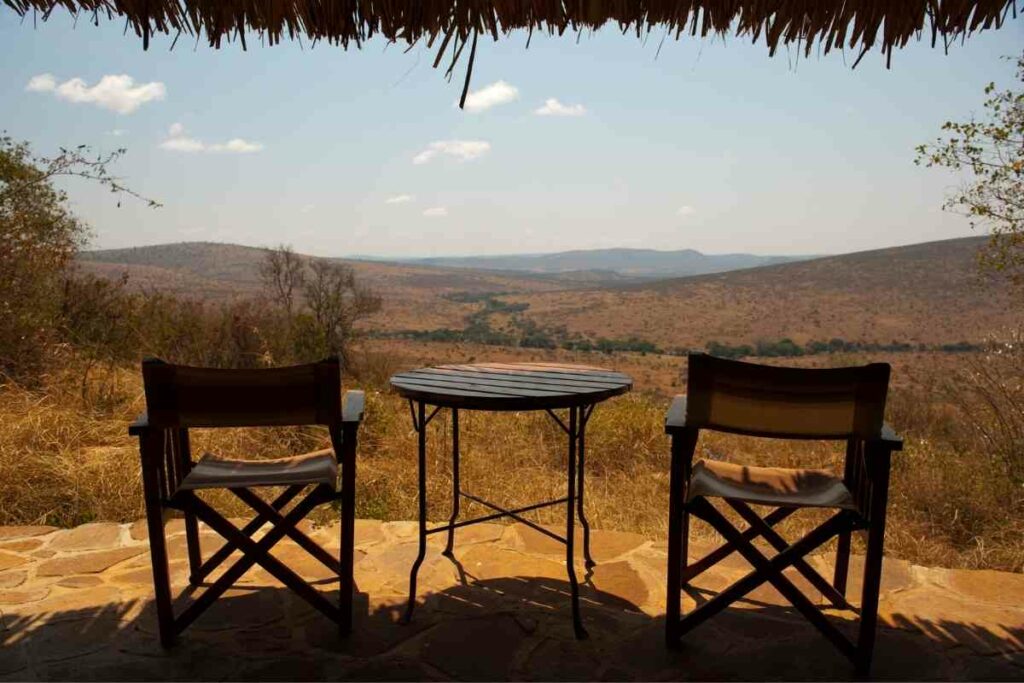
While the roads to these facilities are mostly gravel, they are appropriately marked, so you don’t get lost in the vast wilderness.
One of the best lodges in the park is the Ngala Treehouse.
Picture having a comfortable sleep out gazing at dazzling star constellations on the backdrop of the African jungle.
Besides the scenic views, the larger Ngala Reserve houses the rare white lions, among other incredible wildlife.
You can also use the lodge for a luxurious romantic getaway.
Other prominent lodges include; Camp Shawu; Baobab Hill Bush House; Fitzpatricks Lodge, which is best for family accommodation, and the Hoyo Hoyo Safari Lodge, which offers you the best opportunity to experience the traditional Tsonga Culture.
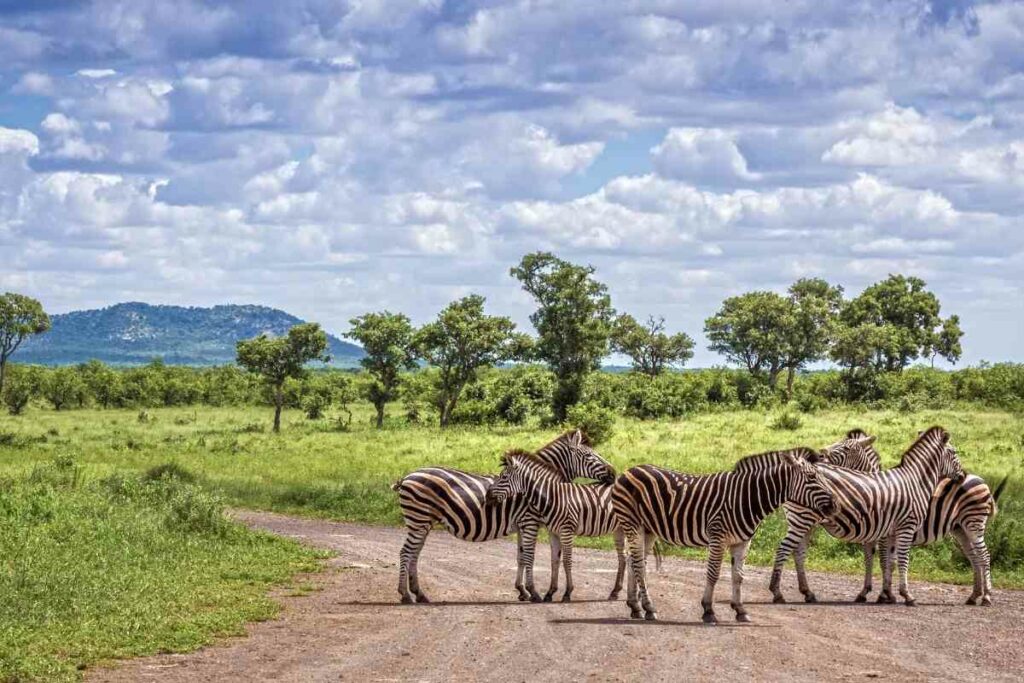
There are also plenty of budget-friendly lodges across the park, complete with running showers and flushing toilets, and you won’t have to break the bank to enjoy your African safari.
Final Thoughts
Kruger National Park offers an incredible wildlife experience from the Big Five, white lions to the Big Six, and everything in between.
Besides, if you just want a serene, relaxing natural environment for a family vacation or a honeymoon, you need to put Kruger National Park on top of your destination list!


